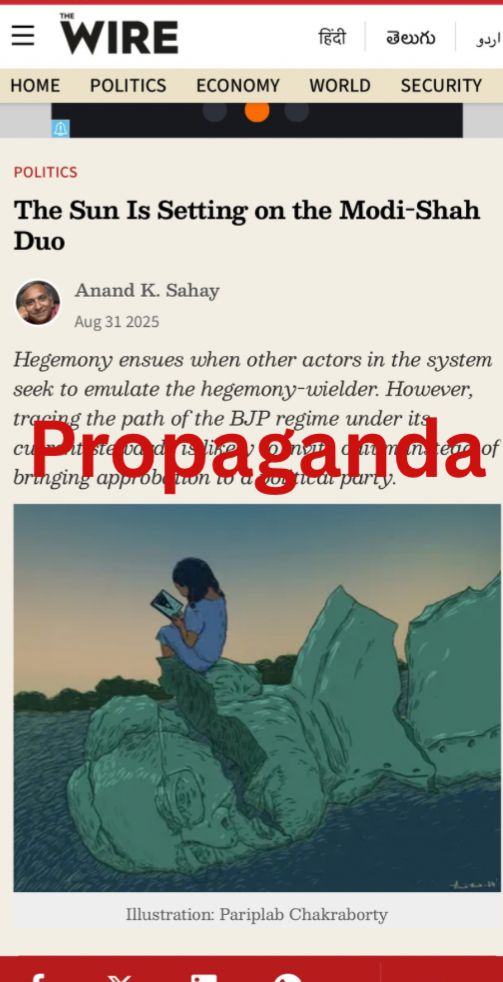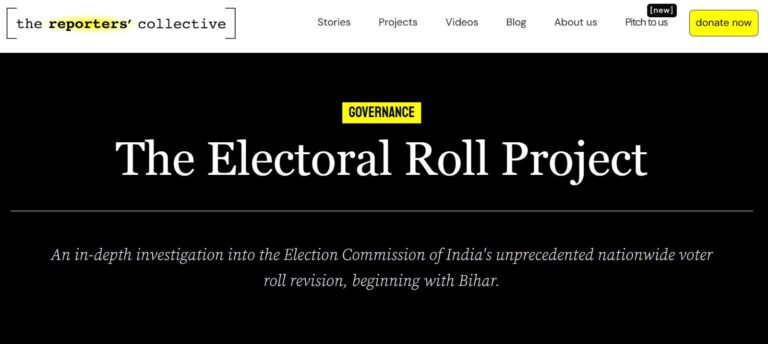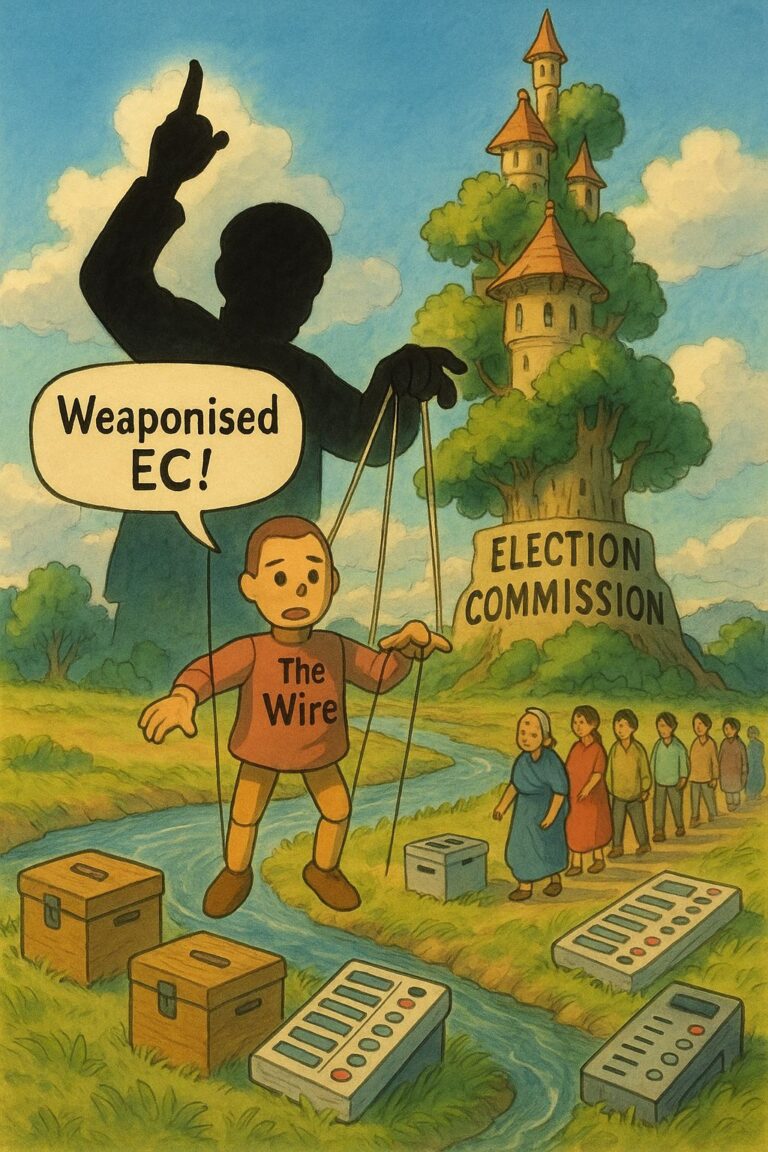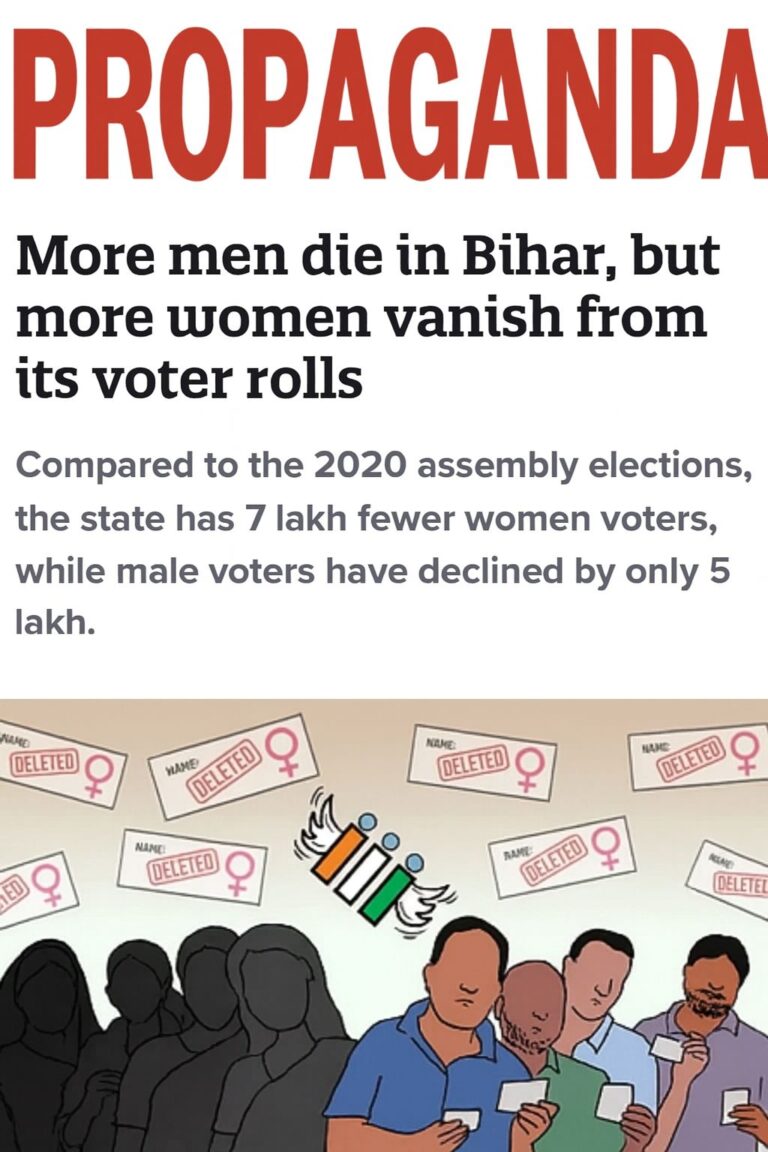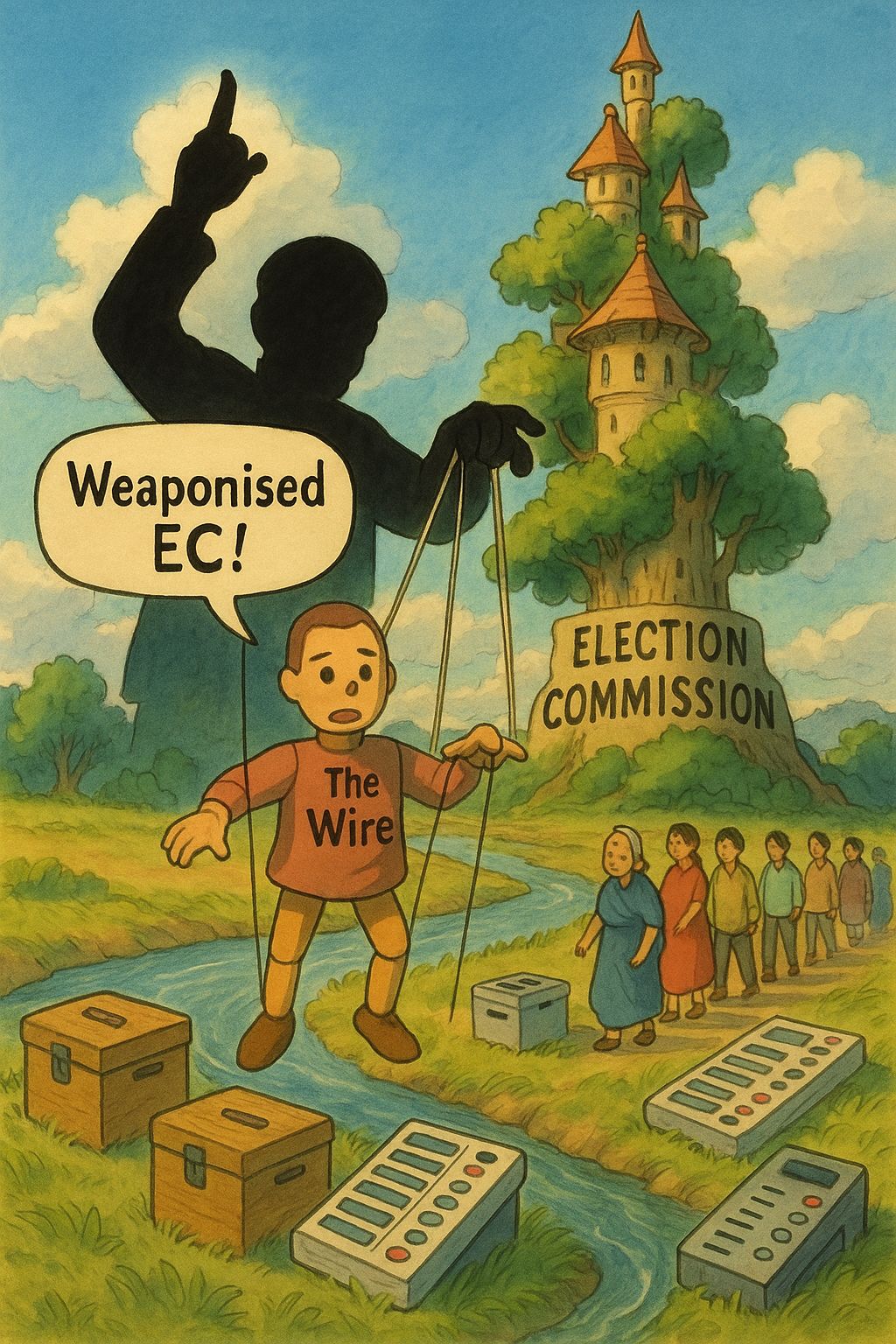
In its recent article titled “The EC Has Weaponised India’s Voting System,” The Wire seeks to cast the Election Commission of India (ECI) as an authoritarian engine bent on subverting democracy. But a deeper dive into data, timelines, and official actions shows that much of what is asserted is speculative, selective, or disconnected from on-the-ground facts. This is not analysis — it is narrative construction. Below is a point-by-point fact check and critique.
1. Turnout & Scale: From “rigged machinery” to logistical triumph
Claim: The Wire implies that high turnout or scale is proof of manipulation, as though the ECI used its power to manufacture participation.
Facts & counterpoints:
- The 2024 Lok Sabha elections recorded an overall voter turnout of 65.79% across the seven phases.
- According to ECI’s official site, 42 statistical reports were published post-poll, encompassing elector counts, state/constituency turnout, vote share, demographic breakdowns, and more.
- The ECI released what media outlets called the “world’s largest electoral dataset” for the 2024 polls, which includes granular details like polling station-level data, state and assembly constituency breakdowns, gender-wise turnout, etc.
- Reuters reported that 642 million votes (via EVMs) were cast — a number only possible through large-scale logistical coordination across remote areas, often under intense heat and difficult terrain.
- The 2024 turnout did dip slightly from 2019’s ~67.4%, but only by about 1–1.5 percentage points, while the raw volume of voters increased.
- In terms of re-polling numbers: 2019 saw ~540 re-polls; in 2024, that number reportedly dropped to 39. That suggests fewer polling irregularities recognized as severe.
The sheer scale and transparency of published datasets contradict the notion of a hidden, unaccountable “weaponised” body. Publishing 42 reports is hardly the work of a regime trying to hide its tracks.
2. The Mahadevapura / “bogus voters” charge: Dramatic claim, thin support
Claim: Rahul Gandhi (quoted in The Wire) claims 1,00,250 bogus/fake voters in Bengaluru’s Mahadevapura, which “tilted” the contest toward BJP.
Facts & counterpoints:
- News reports confirm that Gandhi made this allegation publicly, citing duplicate addresses, invalid registrations, and misuse of forms.
- But the ECI / state election machinery responded by issuing notices to Gandhi, demanding documentary evidence under oath to back his claims — for example, validating names like Shakun Rani alleged to have voted twice.
- The Karnataka Chief Electoral Officer has formally asked Gandhi to produce evidence or face scrutiny.
- The Times of India and other media report that the owner of a 120 sq ft room in Mahadevapura, said by Gandhi to have 80 registered voters, has denied the claim, calling it confusing or false.
- In Uttar Pradesh, elections officials have already fact-checked some claims made by Gandhi. The UP CEO refuted allegations that names like Aditya Srivastava and Vishal Singh were listed across multiple states; the CEO showed they appeared only in one assembly roll.
The “100,250 bogus voters” figure may be rhetorically powerful, but it has not yet survived even preliminary scrutiny. Making such a claim is not journalism — it is assertion without verification.
3. Delay in publishing turnout / preliminary v. final data
Claim: The Wire criticizes delays and upward revisions in turnout figures as evidence of manipulation or suppression of real data.
Facts & counterpoints:
- The ECI’s own practice is to first release preliminary or approximate turnout during polling, with final figures arriving after verification, especially from remote booths. This is standard practice, not evidence of plotting.
- The ADR (Association for Democratic Reforms) has pointed out that for the first phase, the ECI took 11 days to upload data; for the second, 4 days; critics flagged this.
- However, the revisions themselves (1–3 percentage points) are consistent with past election patterns. The discrepancy between preliminary “60 % as of 7 pm” and final 66 % is not new.
- The Wire does not account for practical realities: remote polling stations often report late due to connectivity challenges, delayed submissions, and verification processes.
Delays and minor revisions are expected in an election on this scale. Presenting them as evidence of conspiratorial manipulation — while ignoring the logistical constraints — is intellectually disingenuous.
4. Centralised power, constitutional argument, and institutional pushback
Claim: The Wire frames India’s unified ECI as a danger — implying it concentrates power and invites misuse under Article 324.
Facts & counterpoints:
- India deliberately chose a single national election body (with state election commissions handling local elections) to avoid fragmentation, partisan provincial control, and inconsistency among states.
- The 2023 Chief Election Commissioner Act, criticised by The Wire, has been subject to judicial review; criticisms of it exist, but no court has struck down its core provisions as unconstitutional so far.
- In 2024, the ECI reportedly dealt with over 200 complaints from the INDIA bloc; many were dismissed after due consideration rather than summarily ignored. (Though The Wire does not highlight this.)
- RTI queries: The ECI processed many RTIs and also released Form 17C at every polling booth (a legal requirement). Collating thousands of forms per constituency is operationally difficult — and expected in a large democracy.
The arguments about centralisation and impunity oversimplify constitutional design and institutional checks. If misuse were as easy as implied, we would see far more transparent, widespread abuse — but the evidence does not support that.
5. Ignoring credible critiques while amplifying rhetorical conspiracy
- Transparency push: The ECI’s release of the massive electoral dataset and willingness to publish detailed reports is itself a move toward openness.
- If credibility is an issue, why did the ECI invite 75 international observers from 23 countries? (This is often cited by those defending the process.)
- Why expand home voting for 85+ seniors and disabled voters across the country? That measure expanded participation, not suppressed it.
Narrative ambition over empirical grounding
The Wire’s article reads less like serious institutional critique and more like a political grievance dressed as investigative journalism. It cherry-picks incidents, amplifies rhetorical claims, and relies on absence of public rebuttal as tacit proof. But democracy does not bend simply because someone frames every skeptical question as proof of conspiracy.
As of now:
- There is no verifiable evidence delivered to the public that supports the grand claim of “weaponisation.”
- Legal notices have been issued to those making explosive claims, asking for proof.
- The ECI has responded with data, published extensive reports, and managed one of the largest electoral exercises in history.
Author : Sandiip Gandotra, is a serial entrepreneur, startup founder, social media influencer and political analyst with 25 years of overall experience. Tweets at Sandeep Gandotra

